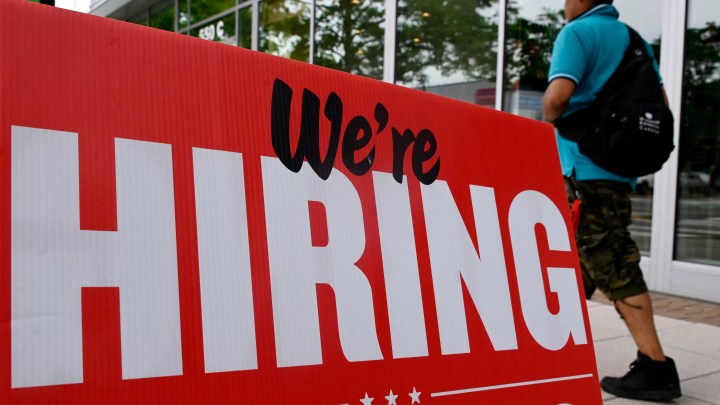
Millions have joined the labor force in the past year

More than 164 million people in this economy are working or would like to work — roughly 62.3% of the civilian population. That is the heart of our economy, and it grew ever so slightly, by about 300,000 people, in May. And it’s a small piece of good news.
Compared with May of last year, though, about 3.5 million more people were working or looking for work.
“That means they’re encouraged about the prospects for finding a job, and they’re looking for those jobs and they’re finding those jobs — and that’s usually very good news for the economy,” said Kathy Jones with the Charles Schwab Center for Financial Research. (Schwab is a Marketplace underwriter.)
Black workers age 25 to 54 made important gains, she said. “The participation rate for prime-age Black workers was 81.2%. That’s the highest since 2005.”
And women’s participation rate climbed from 56.7% to 57% in May. Jones said women drove a lot of the past year’s increase. Still, before the pandemic, women’s labor force participation was rising rapidly, and they aren’t back to that level yet. Neither are men overall.
“Right now, everybody is looking at the labor force participation rate because they’re wondering, ‘What does a full recovery for the U.S. economy look like?'” said Betsey Stevenson, a professor of economics at the University of Michigan.
Will we have as many people working? Will we make as much money or provide as many goods and services? What is the new normal? Another reason economists are watching the participation rate is that if it continues to rise, it would let some pressure out of the job market and hold down wage growth.
“This would help relieve inflationary pressures ’cause there won’t be that supercharged demand for goods and services,” said Kenneth Kim, a senior economist at KPMG.
But as the pandemic recovery rumbles on and more people enter the workforce, a warning courtesy of Betsey Stevenson: “More vulnerable populations, people who tend to earn less, tend to get brought back into the later stages of recovery. If a recovery ends too quickly, those folks just aren’t brought back in.”
As the Federal Reserve raises interest rates and tries to cool down the economy to fight inflation, the window for people to get back in may start to close.
There’s a lot happening in the world. Through it all, Marketplace is here for you.
You rely on Marketplace to break down the world’s events and tell you how it affects you in a fact-based, approachable way. We rely on your financial support to keep making that possible.
Your donation today powers the independent journalism that you rely on. For just $5/month, you can help sustain Marketplace so we can keep reporting on the things that matter to you.

















